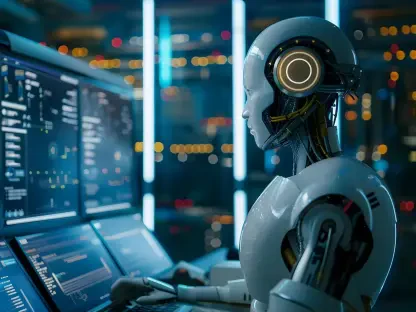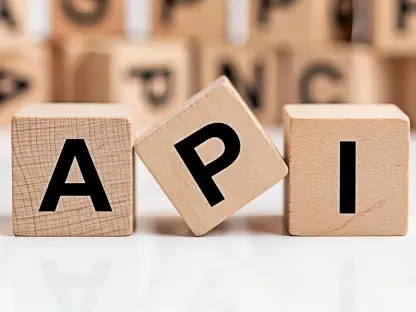Meet Anand Naidu, a seasoned development expert with a mastery of both frontend and backend technologies. With a deep understanding of various coding languages, Anand brings a unique perspective to the rapidly evolving world of AI engineering. In this interview, we dive into the hidden skills that define this emerging role, exploring how AI engineers navigate complex challenges like continuous evaluation, adaptability to fast-paced changes, and the critical need for de-risking and governance in AI systems. Join us as Anand shares his insights on building robust AI applications and shaping the future of software development.
How would you define the role of an AI engineer, and what sets it apart from traditional software engineering?
To me, an AI engineer is someone who bridges the gap between cutting-edge AI models and practical, deployable systems. Unlike traditional software engineering, where the focus is often on writing deterministic code and managing infrastructure, AI engineering leans heavily on integrating foundation models through APIs or open-source tools. We’re not usually training models from scratch; instead, we’re building applications that leverage these models, evaluate their performance, and ensure they meet real-world needs. The unpredictability of AI outputs adds a layer of complexity that traditional software engineers don’t typically deal with.
What changes have you noticed in the AI engineer role since it was first conceptualized in 2023?
Since the role was framed a couple of years ago, I’ve seen a shift toward higher-level problem-solving. Initially, it was about figuring out how to apply large language models effectively. Now, it’s more about system design—creating workflows that can handle constant updates to models and benchmarks. The focus has moved away from coding minutiae to judgment calls on evaluation and adaptability. It’s less about the “how” of programming and more about the “why” and “what” of system outcomes.
Why do you think AI engineering is moving engineers away from core programming fundamentals?
AI engineering introduces layers of abstraction that make low-level programming less central. When you’re working with pre-trained models or APIs, the heavy lifting of algorithm design is often already done. Instead, you’re focusing on integration, testing, and iteration. It’s not that fundamentals aren’t important—they are—but the day-to-day work is more about orchestrating systems than writing code from the ground up. This shift lets us solve bigger problems faster, but it can also create a gap if engineers lose touch with the underlying mechanics.
Can you explain why evaluation is often referred to as the new continuous integration in AI engineering?
Evaluation has become the backbone of AI engineering much like continuous integration was for traditional software development. CI was all about automating testing and deployment to catch issues early. Similarly, evaluation in AI is about continuously measuring and testing model performance to ensure reliability. With AI, outputs aren’t always predictable, so we need systematic ways to assess quality and catch problems before they hit production. It’s about turning the black box of AI into something we can engineer with confidence.
What’s your approach to building systems that continuously test and measure AI models?
I start by defining clear metrics that align with the application’s goals—things like accuracy, relevance, or user satisfaction. Then, I set up automated pipelines to run evaluations on a regular basis, often integrating datasets that mimic real user interactions. Tools like open-source libraries help standardize this process, allowing me to compare models or track performance over time. The key is to make evaluation a seamless part of the development cycle, so it’s not an afterthought but a core discipline.
How do you create evaluation datasets that truly reflect real-world customer interactions?
It’s all about capturing the messiness of real user behavior. I collaborate with product teams to gather data from actual customer queries, feedback, or usage logs. Then, I curate this data to include a mix of common scenarios, edge cases, and even ambiguous inputs. The goal is to build a dataset that mirrors the diversity of interactions the AI will face. Sometimes, I’ll also synthesize data to fill gaps, but I always validate it against real-world patterns to ensure it’s representative.
How do you stay adaptable in a field where AI models and tools seem to change almost weekly?
Staying adaptable means focusing on flexibility over attachment to any single tool or model. I prioritize modular system design, so swapping out a model or API doesn’t break everything. I also keep a pulse on the latest research and community updates through platforms and forums. It’s not about knowing everything—it’s about knowing where to look and being ready to pivot. I allocate time each week to experiment with new tools or approaches, so I’m not caught off guard by sudden shifts.
Why is de-risking becoming such a critical skill for AI engineers in your view?
De-risking is huge because AI systems can have unintended consequences—whether it’s biased outputs, legal issues, or compliance failures. As engineers, we’re often the ones closest to the data and architecture, so we’re in a position to spot risks early. With regulators and users demanding more transparency, we have to build systems that can explain themselves and withstand scrutiny. De-risking isn’t just about avoiding problems; it’s about building trust in AI as a reliable technology.
How do you balance the push for innovation with the need to minimize risks in AI projects?
It’s a tightrope, but I approach it by embedding guardrails from the start. For instance, I’ll set up strict testing protocols and data validation checks to catch issues early, even as I’m iterating on new ideas. I also advocate for clear documentation and transparency in how models are trained or used, so there’s a paper trail if questions arise. Innovation doesn’t have to mean recklessness—it’s about moving forward thoughtfully, with risk management baked into the process.
What is your forecast for the future of AI engineering over the next few years?
I think AI engineering will become even more interdisciplinary. We’ll see tighter integration with fields like data governance, ethics, and even policy as the stakes of AI deployment grow. Evaluation and adaptability will remain core, but I expect tools and frameworks to mature, making these processes more accessible to non-specialists. We might also see a push toward standardization—common metrics or protocols for AI systems—so there’s less guesswork. Ultimately, I believe AI engineers will play a pivotal role in defining how intelligence gets woven into every layer of technology.









